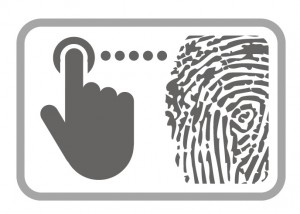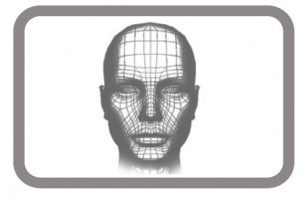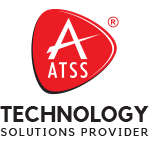ELECTRONIC SECURITY
What is the biometric system ?


Finger Print - An impression or mark made on a surface by a person's fingertip, able to be used for identifying individuals from the unique pattern of whorls and lines on the fingertips.
Biometrics is the practice of automatically identifying people by one or more physical characteristics. Biometric solutions are more accurate and secure than cards or keys because a fingerprint cannot be lost or stolen. They are more convenient and cost-effective than traditional employee attendance systems because biometrics are the sole technology capable of eliminating “buddy punching” and falsified time cards. Biometric systems are extremely accurate, quick to implement, and cost-effective.
Different Kinds of Biometrics
Hand geometry, fingerprint, voice, signature, face geometry, and iris or retinal scans are all in use today. Each different type has its advantages and disadvantages, making each suitable for different types of applications. Fingerprint and hand geometry are the most commonly used types for time and attendance applications.
Difference between “Biometric Identification” and “Biometric Verification”
Biometric identification compares a biometric “signature” to all the records stored in a database to determine if there is a match. Because it requires comparing each existing record in the database against the new biometric characteristic, it can be slow and is usually not suitable for real-time applications such as access control or time and attendance. You’ll find biometric identification used most frequently in such applications as law enforcement — for instance, the comparison of a fingerprint from a crime scene to a database of prints collected from convicted criminals.
Biometric verification compares a newly-scanned biometric characteristic to a measurement previously collected from that same person to verify that individual’s identity. For instance, when an employee is hired, that employee’s fingerprint will be enrolled into the company’s biometric time and attendance system. When that employee attempts to clock in the next day, her newly-scanned fingerprint will be compared to the fingerprint scan collected when she was enrolled in the system. If there is a match, the employee’s punch will be recorded. Because of this one-to-one comparison, biometric verification systems are generally much faster than biometric identification systems. Most commercial applications of biometrics for time and attendance or access control use biometric verification.
False Acceptance and False Reject
You will often hear biometric system vendors touting their system’s low false-acceptance or false-reject rate. These refer to how accurate and reliable the system is in correctly identifying people. For time and attendance systems, a false acceptance occurs when the system registers a punch from an employee even when someone else’s finger or hand (or an artificial finger or hand) is offered for validation. A false reject happens when the system refuses to accept the employee’s own fingerprint or hand as valid. Biometric systems all strive to have rates of false acceptances and false rejects as low as possible. False acceptances may allow instances of buddy punching to “slip through the cracks.” False rejects can lead to employee frustration when they aren’t able to clock in and out successfully using their own hands or fingerprints.
How does Fingerprint Biometric Work ?
When an employee is first enrolled in a fingerprint-based biometric time and attendance system, the software records a template of the employee’s fingerprint and associates that template with the employee’s ID number. This template measures the relationship between various points in the fingerprint. Each time the employee attempts to clock in or out, the time and attendance software verifies that the newly scanned fingerprint matches the template originally stored for that ID number. If there is a match, the punch is recorded.
The word “biometric” is derived from the Greek words “bio” (life) and “metric” (to measure). Modern biometric technology is used to record unique physical or behavioural characteristics of an individual. This data is then used to verify a person’s identity or identify him/her in a database of enrollees. Although there are several types of biometric technology, fingerprint is well established as the industry leader. Fingerprint matching technology is:
Universal
Everyone is born with a unique set of fingerprints, and no two are the same. Even “identical” twins have differing fingerprints, consisting of individual characteristics such as whorls, ridges, and bifurcations. A person’s fingerprints do not change throughout his or her life, even with age and weight gain/loss. This universality makes fingerprint recognition an extremely effective identification technology.
Accurate
ATSS fingerprint readers utilize the latest fingerprint matching algorithms for speed and accuracy. Our products offer user-definable security thresholds for convenience and high security. At its most secure setting, ATSS Fingerprint reader has a false acceptance rate of 0.01%. In other words, there’s only a 1 in 10,000 chance of verifying the wrong fingerprint. Our fingerprint algorithm is among the most accurate in the world.
Fast
Biometric Fingerprint readers review a live human fingerprint, analyze its minutiae points, angles and distances, and create an encrypted digital “template” (mathematical representation) of the fingerprint which is made up of 1s and 0s. The template is stored on fingerprint devices and in a database for rapid fingerprint matching and verification. ATSS fingerprint readers can perform a 1:1 fingerprint verification in less than 1 second, and conduct 1:n fingerprint searches at a rate of over 1,700 templates per second.
Secure
Biometric Fingerprint data is stored in the ATSS readers and database in encrypted template format only. No actual fingerprint images are stored, and templates cannot be reverse engineered to form a fingerprint image. This protects the user’s fingerprint data and prevents it from ever being compromised. In fact, many governments around the world are now utilizing fingerprint biometric technology in e-passports, voter registration programs, and national identification programs.
Convenient
Since biometric technology relies on one’s fingerprint, there are no keys or cards to be lost, no passwords to forget, and no time cards to fill out. ATSS solutions are easy to use and save organizations time and money.
Cost Effective
Biometric access control and attendance solutions have evolved a great deal in recent years and are now available at price ranges well within the reach of both large and small organizations. Return on investment occurs quickly, particularly in time & attendance scenarios where the biometric solution eliminates payroll slippage caused by time card errors and “buddy punching”.
X7
Essl X7 Door Access Control The Essl X7 is a biometric door access control system that uses fingerprint recognition for...
READ MORESF100
Essl SF100 Fingerprint Access Control ESSL SF100 IP-Based Fingerprint Access Control is a biometric security system that uses a person’s...
READ MOREF18
Essl F18 – Fingerprint Biometric Access Control Essl F18 is a biometric access control system that uses fingerprint recognition technology...
READ MOREF22
Essl F22 WIFI Access Control Machine With Biometric Attendance Essl F22 WIFI Access Control Machine with Biometric Attendance The Essl...
READ MORE

 Access Control
Access Control Automatic Door
Automatic Door Baggage Scanner
Baggage Scanner Bell Timer
Bell Timer Boom Barrier
Boom Barrier Burglar Alarm
Burglar Alarm Canteen Management
Canteen Management CCTV Camera
CCTV Camera Video Analytics
Video Analytics Anpr Camera
Anpr Camera People Counting Camera
People Counting Camera Central Vacuum Cleaner
Central Vacuum Cleaner DFMD
DFMD Electric Fence
Electric Fence EAS
EAS Fire Alarm
Fire Alarm Fire Hydrant
Fire Hydrant Fire Suppression
Fire Suppression Flap Barrier
Flap Barrier Garage Door
Garage Door Gas Detector
Gas Detector Gate Automation
Gate Automation GSM Communicator
GSM Communicator Guard Patrol
Guard Patrol HHMD
HHMD Home Automation
Home Automation Home Theatre
Home Theatre Hotel Door Lock
Hotel Door Lock ID Cards
ID Cards Smart Lights
Smart Lights IP Network
IP Network Nurse Call System
Nurse Call System Occupancy Sensor
Occupancy Sensor PA Systems
PA Systems Payroll Software
Payroll Software Road Blocker
Road Blocker Smart Lock
Smart Lock Time Attendance
Time Attendance Tripod Turnstile
Tripod Turnstile UVSS
UVSS Video Door Phone
Video Door Phone Smart Parking System
Smart Parking System Visitor Management
Visitor Management Wireless Communication
Wireless Communication